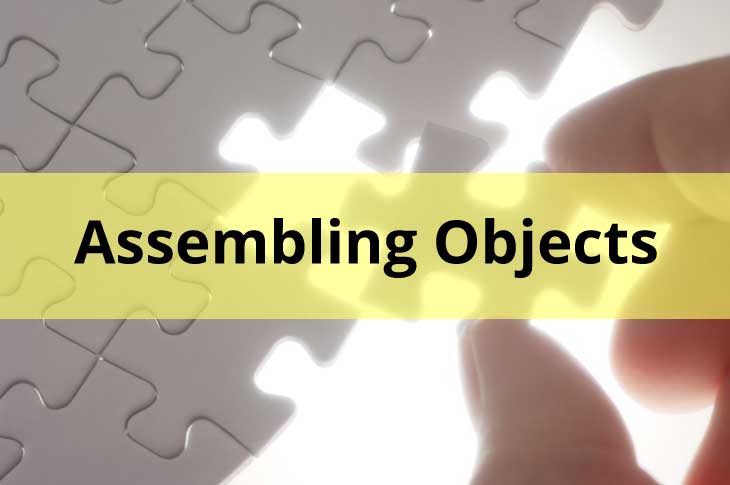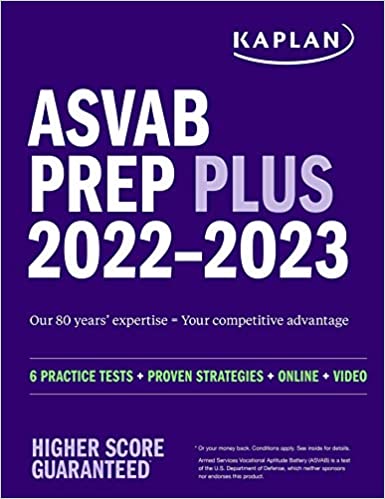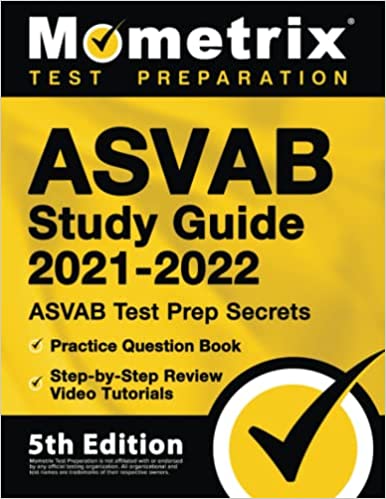
The Assembling Objects subtest of the Armed Services Vocational Aptitude Battery is designed to measure your ability for visualizing spatial relationships.
In this section of the ASVAB you will be required to view pieces of an object and then determine how those pieces fit together.
If you’re asking yourself why this ability is important, the answer is because good spatial skills allow people to figure out maps and interpret graphs and technical drawings.
Recommended ASVAB Study Guides
Achieving the best possible score on the ASVAB including the ASVAB assembling objects subtest starts with arming yourself with the right tools for the job. We recommend the following study guides to help you boost your score.
[wptb id=11647]
One Big Note
Currently, the Navy is the only branch of the military that uses the Assembling Objects score for jobs qualification and it only uses it for a select number of jobs.
In other words, unless you are going into the Navy and are seeking one of those jobs, this section of the ASVAB should receive less of your study focus than other sections.
Army Developed, Navy Approved
One interesting side note before we move on to discussing Assembling Objects in more detail, this subtest was actually created in response to an Army study. The study, which was completed in 1994, said that using Assembling Objects type questions was a good indicator of men and women’s spatial ability and problem-solving skills.
However, after Assembling Objects was added to the ASVAB in 2004, the Navy was the only military branch to make it part of their job qualifications.
OK, with that now out of the way, let’s take a closer look at the Assembling Objects subtest.
The Test
For the Assembling Objects subtest you will 15 minutes to solve 16 problems on the CAT-ASVAB test and 16 minutes to solve 25 questions on the paper version of the ASVAB.
The Problems
There are two basic types of Assembling Objects problems:
- Connection problems – in these problems you will need to mentally attach lines and shapes.
- Puzzle problems – in these problems you will need to take shapes and mentally connect them to create new shapes.
Solving Connection Problems
These types of questions require you to mentally attach lines and shapes. For instance, you may have a rectangle labeled with an “a” at a specific point, a line with “a” on one tip and a “b” on the other and a square with a “b” labeled at a specific point. What you must do is rotate the image mentally so that the “a” from the rectangle connects with the “a” of the line while the “b” from the square connects with the “b” from the line.
Then you must choose the resulting image from the four provided choices.

The important thing to remember when doing these types of problems is that the answer may involve rotating or moving the objects but it will never involve mirroring the pieces. In other words, the answer cannot have a mirror image of the original. You can only rotate an object clockwise or counter-clockwise to achieve a result.
Solving Puzzle Problems
With these problems, you will have a serious of shapes that you must put together to create a new shape. Again, like with connection problems, the answer will never involve mirroring a shape, instead you will need to rotate or move the images in your mind to create the new shape.
For instance, you may have a problem where you have three different pieces and you must arrange them so that they form an egg.
Problem Solving Tips
- Take your time (and try not to get a headache). Remember, unless you are going for a particular Navy job this section of the test can be taken a little lighter than other sections – so have fun. Look at it as a challenge and nothing to get stressed or upset about. Just do your best.
- On Puzzle problems, one technique you can use is to compare a particular piece in each of the drawings, by doing this you may be able to quickly eliminate false answers if they use a mirror image or don’t use that piece.
- On connection problems, one approach would be to locate the dot on the original shape and then scan and eliminate any answer images that show the dot in a different location on that shape.
- Be sure to be aware of mirror images, test creators often use mirror images to trick your eyes. Keep in mind a mirror image will never be correct
Preparing for the Assembling Objects Subtest
Here are a few things you can do to improve your spatial skills:
- Do more puzzles. In particular, put together complex jigsaw puzzles as this can get a great way to practice and improve spatial perception.
- Play computer games. That’s right, in this one instance your study can involve playing computer games, which have been shown to improve spatial aptitude of players.
- Sketching is another way to improve spatial ability. Just look at an object or an image and try to sketch it, this can help you mentally visualize shapes, angles, etc.
- Read maps. Reading maps can help you better gauge scale and better visualize size and direction between objects.
- Take our practice tests. What better way to prepare for something than to practice that very thing? Our Assembling Objects practice test has been created to closely resemble the real thing so you can practice completing questions that are similar to what you will find on the test.
You will also get used to the timed test experience so you’ll be better able to handle the pressure of having limited time to complete the questions.
Remember, while much of the ASVAB closely follows what we’ve learned and experienced in school, the Assembling Objects section is different. Most schools don’t provide instruction in this area which means this can all be very new to you. Using our practice exams is a great way to get more familiar with Assembling Objects and then do better on the subtest. Going in and expecting to perform well on something that you are not familiar with can be a sure recipe for disappointment.
ASVAB Study Guides
Using the right ASVAB study guide is essential to ensure the best possible outcome when preparing for the exam.





